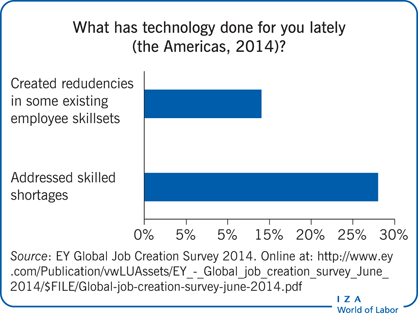Elevator pitch
Studies find that technological change has contributed to the decline in manufacturing and to persistent unemployment in many advanced economies. While process innovation can be job-destroying, product innovation can imply the emergence of new firms, new sectors, and thus new jobs. But even for process innovation, the final impact on labor demand is shaped by market mechanisms that can compensate for the direct job-destroying impact if market and institutional rigidities do not impede them. Policies should maximize the job-creation effect of product innovation and minimize the direct labor-saving impact of process innovation.

Key findings
Pros
R&D fosters labor-friendly product innovation that leads to job creation.
Product innovation may imply the emergence of new firms and new sectors and thus new jobs.
Price and income compensation mechanisms can counterbalance the initial displacement of workers that occurs following process innovation.
Empirical evidence reveals the possible job-creation impact of innovation.
Industrial and innovation policies that support R&D and product innovation, especially in high-tech sectors, can foster job creation.
Cons
Process innovation may displace labor and create technological unemployment.
New products may displace older products and so impede the job-creation effects implied by the diffusion of the new activities.
Market and institutional rigidities can impede the price and income compensation mechanisms that work to lessen job destruction.
The job-creation impact of innovation is often limited to product innovation and to the high-tech sectors.
Safety nets are necessary for the possible job losses due to process innovation in non-high-tech sectors.